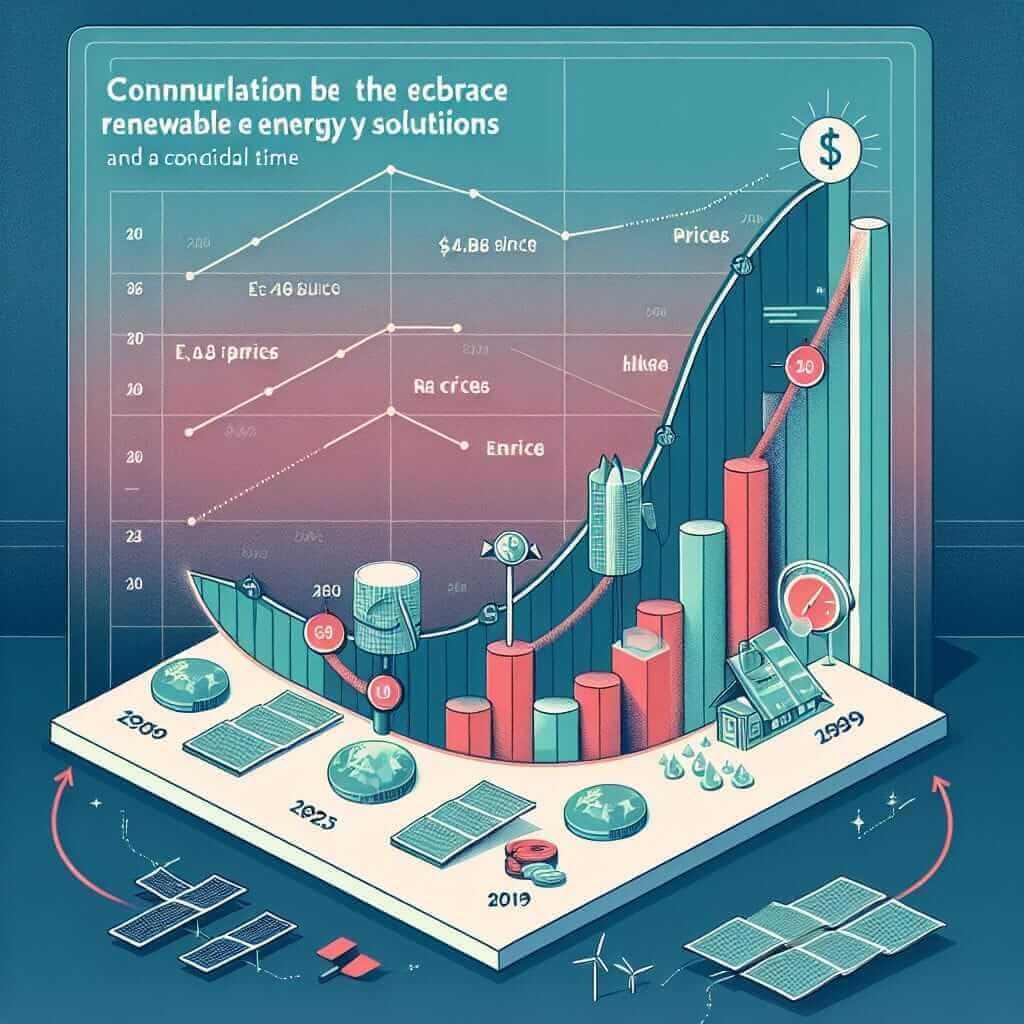The IELTS Reading exam is a crucial component for anyone aiming to achieve a high score in the IELTS test. This section tests a candidate’s ability to comprehend written texts, analyze information, and respond accurately to various types of questions. In this post, we will focus on constructing a complete IELTS Reading practice exam, discussing the trendy and relevant topic: “What are the effects of renewable energy on energy prices?”
Introduction
The transition to renewable energy sources has been a significant global trend in the past decade. Understanding the effects of renewable energy on energy prices is critical not only for IELTS preparation but also for general awareness. This topic has featured in various forms in past IELTS reading exams, making it a probable contender for future tests as well.
Reading Passage: Renewable Energy and Its Impact on Energy Prices
Reading Text (Medium difficulty)
Renewable energy sources such as solar, wind, and hydropower are increasingly being adopted worldwide. These clean energy sources boast the advantages of sustainability and reduced environmental impact. However, their influence on energy prices is complex and multifaceted.
In the short term, the development and integration of renewable energy infrastructure can drive up energy costs. This is primarily due to the significant capital investment required for the installation of solar panels, wind turbines, and other renewable energy technologies. Various governmental policies and subsidies often contribute to these initial costs, further impacting the total expenditure involved.
Conversely, the long-term effects of adopting renewable energy can lead to a decrease in energy prices. The operational costs of renewable energy sources are relatively low compared to fossil fuels. Once the infrastructure is in place, solar panels and wind farms generate electricity with minimal ongoing expenses, primarily involving maintenance and monitoring.
The intermittency of renewable energy sources presents another dimension to their impact on energy prices. Solar and wind energy depend on weather conditions, leading to fluctuations in energy supply. To mitigate these fluctuations, a combination of energy storage systems and auxiliary power sources—often fossil fuels—are employed, which may influence energy prices.
Several studies and real-world examples illustrate these dynamics. For instance, Germany, a leader in adopting renewable energy, has seen significant periods where renewable sources have lowered energy prices. Similarly, in countries with ample sunlight, like Australia and parts of the United States, solar power has become a more cost-effective solution over time.
Despite these potential benefits, the transition to a renewable energy-dominated grid is not without challenges. Energy markets must adapt to the variability and diffuse nature of renewable energy. Government interventions, technological advancements, and market regulations play crucial roles in stabilizing energy prices during this transition.

Practice Questions
Multiple Choice
-
According to the passage, what is a primary reason for the initial increase in energy prices due to renewable energy?
- A) Increased demand for energy
- B) High capital investment for infrastructure
- C) Government reluctance to fund renewable projects
- D) Rising costs of fossil fuels
-
What factor helps to mitigate the intermittency of renewable energy sources?
- A) Consistent weather patterns
- B) Fossil fuels and energy storage systems
- C) Lower operational costs
- D) Reduced environmental impact
True/False/Not Given
- The passage states that the operational costs of renewable energy are higher than fossil fuels. (True/False/Not Given)
- Australia has not seen any cost benefits from adopting solar energy. (True/False/Not Given)
- Energy prices in Germany have been unaffected by renewable energy adoption. (True/False/Not Given)
Summary Completion
Complete the summary using the words provided below.
- fluctuation, significant, maintenance, energy storage, subsidies
The initial adoption of renewable energy often involves capital investment, partly due to the need for infrastructure and offered by governments. Despite these early costs, the long-term costs are low, mainly for and monitoring. To address the _____ in renewable energy supply, energy storage and auxiliary power sources are used.
Answer Keys
Multiple Choice
- B) High capital investment for infrastructure
- B) Fossil fuels and energy storage systems
True/False/Not Given
- False
- False
- Not Given
Summary Completion
- significant
- subsidies
- operational
- maintenance
- fluctuation
Common Mistakes and Learning Points
Errors Often Encountered
- Misinterpreting the initial investments as representative of ongoing costs.
- Confusing short-term and long-term impacts on energy prices.
- Overlooking the role of weather-dependence in the intermittency of renewable energy.
Vocabulary Focus
- Intermittency (n) [ˌɪntərˈmɪtənsɪ]: The state of being irregular or variable in occurrence.
- Example: The intermittency of wind energy can pose challenges for consistent energy supply.
- Subsidies (n) [ˈsʌbsɪdiz]: Financial assistance provided by the government to support specific industries or sectors.
- Example: Government subsidies help reduce the initial costs of renewable energy infrastructure.
- Operational Costs (n phrase): The day-to-day expenses required for running a facility or system.
- Example: Once established, the operational costs of solar farms are relatively low.
Essential Grammar Points
- Passive Voice Construction:
- Formula: Subject + Verb (to be) + Past Participle
- Example: The initial costs are influenced by government subsidies.
- Use of Gerunds after Prepositions:
- Formula: Preposition + Gerund (-ing form)
- Example: The advantages of adopting renewable energy include reducing long-term costs.
Tips for High Reading Scores in IELTS
- Skimming and Scanning: Quickly browse through the passage to understand the overall theme before delving into details.
- Keywords Identification: Focus on finding keywords in the questions and locating them within the passage.
- Practice Regularly: The more you practice, the more familiar you will become with the types of questions and themes presented in the IELTS Reading exam.
- Time Management: Allocate your time based on the complexity of the text. Prioritize easier questions to secure marks quickly and save time for more challenging ones.
Following these guidelines and regularly practicing with passages like the one above will significantly enhance your reading skills and performance in the IELTS exam.